Videos—JR: Crete to Malta
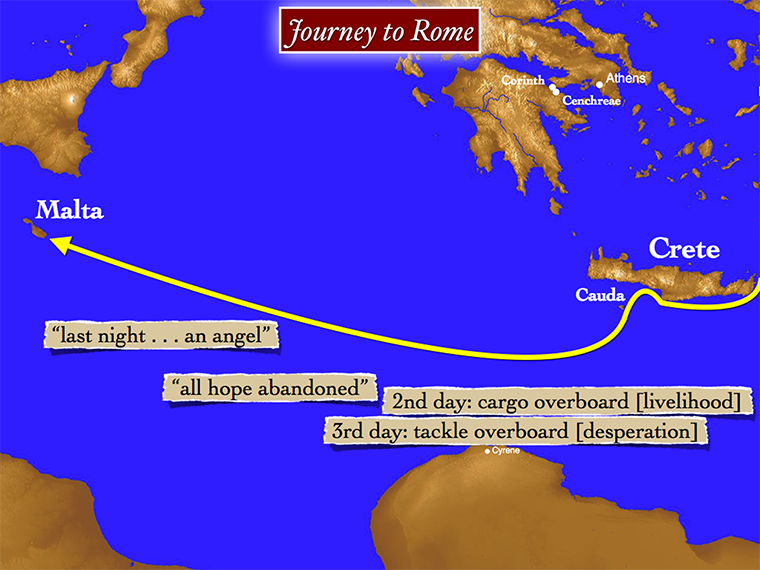
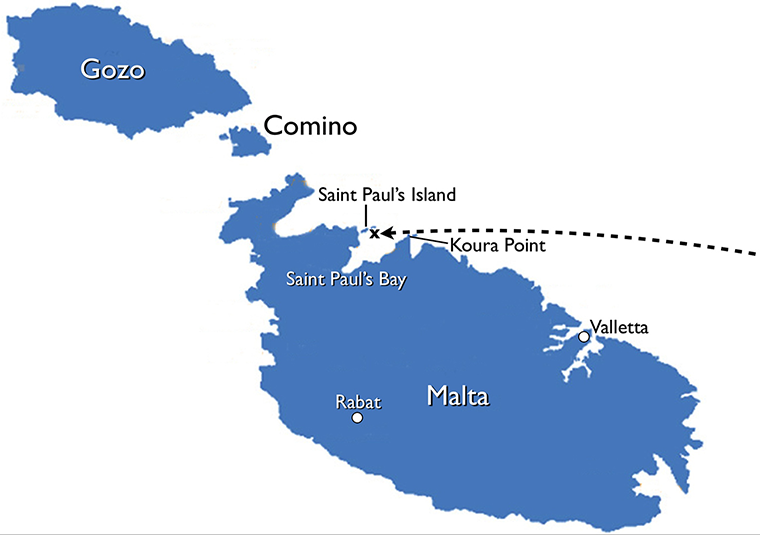
-
JR—Malta: Shipwreck
-
Shipwreck: Koura Point
The crew picks up soundings of a shoreline they cannot see but know is there as they can hear the waves crashing in. Soundings taken at intervals prove they are losing depth quickly—a dangerous situation since they are shrouded in night's darkness and cannot see to navigate. Crashing against unseen cliffs of an unknown shoreline is a clear and imminent danger. To slow or stop their progress toward an unknown shore, they let out four of the mammoth sea actors to hold them until morning. Only very recently, examples of these first-century grain ship anchors have been discovered. Two are on museum display, one in Reggio Calabria, Italy.

-
Shipwreck: Attempted Mutiny
Several of the stories embedded into the narrative of the shipwreck of Paul are told in the service of Luke’s deliberate recasting of Paul’s narrative characterization from negative to positive. From a narrative perspective, Luke works the material brilliantly to support his theme about Paul and God’s will so crucial to this final stage of the story of Acts. The story of the sailors’ attempted mutiny is the beginning of Luke’s rehabilitation of Paul’s character at the end of Acts.
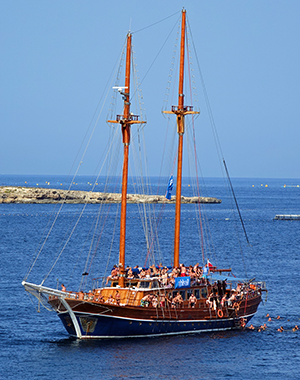
-
Shipwreck: Saving Prisoners
Luke’s positive characterization of Paul starting immediately after the sea vision continues in two more narratives. One narrative is Paul's advice to take food to strengthen for the challenge ahead in surviving the waves in the struggle to get to shore. At Fair Havens, Paul's advice was ignored. Now, Paul's advice is heeded. The story has changed completely since the sea vision in which Paul reaffirms his faith in God alone. Paul, however, is not the only one transformed by his experience. The impact is felt by everyone on board, most especially the other prisoners, who are spared by Julius because of the centurion’s deep regard for Paul.
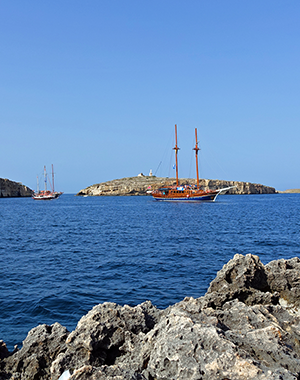
-
Shipwreck: "Between Two Seas" (Acts 27:41)
Acts 27:41 is quite the study in translation theory, although the English reader would not have a clue from many modern translations. Luke creates an odd expression that baffles logical translation in this verse when he describes the place where the grain ship founders as “between two seas.” Modern translations capitulate to paraphrasing this strange Greek expression as “sandbar” or “reef” much too quickly. In so doing, they actually make Luke’s vivid Greek description disappear behind inappropriate English words that actually do not have anything to do with the straightforward thought of Luke’s careful but strange construction. The topography of Saint Paul’s Bay is the most likely solution, as proposed over a century ago by James Smith.
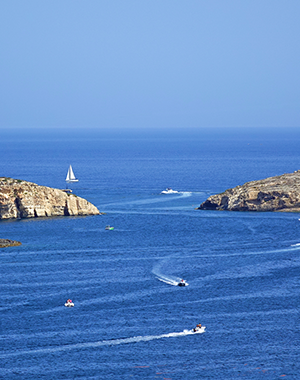
-
Shipwreck: Grain Ship Anchors
The Museo Archeological Nazionale di Reggio Calabria in Reggio Calabria, Italy (ancient Rhegium in Acts) has one of the most significant maritime finds, only recently discovered, documenting the Acts account of the shipwreck of Paul on the voyage to Rome. This museum has on display a first-century anchor of the kind used on the great grain ships of Alexandria. The actual name of the ship, “Hera,” is inscribed clearly on the anchor, and part of the petrified wood beam incredibly remains. These anchors were huge, seven to eight feet long, inserted onto a heavy wood beam that ended with two outstretched arms tipped with copper to dig into the seafloor. Maneuvering four of these massive lead stock anchors in a coordinated manner would have been no small feat for many sailors aboard Paul's ship.
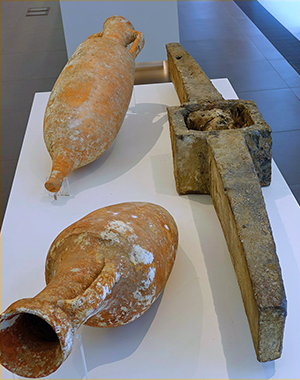
-
Shipwreck: Mdina Cathedral
Malta is filled with beautiful cathedrals, several that celebrate the famous story of Paul’s arrival on the island. One of the most important frescos ever painted depicting Paul’s shipwreck is in the altar ceiling of Saint Paul’s Cathedral in Mdina. One reason the fresco is beautifully conceptualized is that the Baroque seventeenth-century artist, Mattia Preti, has captured perfectly the significance of the overwhelming theme essential to Luke’s entire narrative purpose in this last movement in Acts related to Paul, missed in so many commentaries on Acts. You have to read my own commentary to find out the significance of Preti’s perspective.

-
Shipwreck: Salvation Miracle
Luke specifically counts the number of people who were on board the Alexandrian grain ship the morning of its foundering in the sea in Saint Paul’s Bay on the fifteenth day of the storm. This number is not an incidental piece of trivia without narrative purpose.
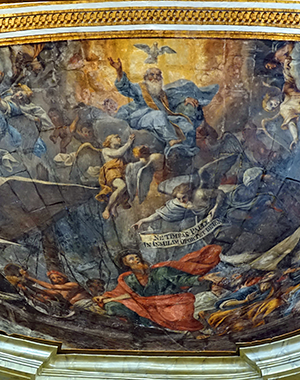
-
Shipwreck: Koura Point
-
JR—Malta: Winter Residence
-
Residence: Sankebite Backstory
Almost everyone knows about the story of Paul’s snakebite once arriving on the beach at Malta. Few, however, know the reason why Luke tells this story. Luke capitalizes on the fanciful narrative the islanders invent that they use to explain the evidence of Paul’s unexpected survival standing in front of them. In this way, Luke emphasizes the true, divine story within their divine story. In addition, Luke uses the snakebite story to continue to develop the theme of the transformation of Paul’s characterization after Paul’s dramatic, personal response to the sea vision from God.

-
Residence: Publius's Hospitality
On a small island such as Malta, news spreads fast. The “chief man” of the island, the Roman governor, Publius, invites these unexpected arrivals to his private residence in a formal offer of patron-client exchange. Someone of Paul’s miracle status would be an honor to host. Publius offers himself as a patron, and a chosen few of the shipwreck survivors accept, including Luke. What would the accommodations of Publius’s residence have looked like? A thatched-roof island bungalow near the beach? Hardly! A first-century Romana Domus (Roman city home) has been excavated in the city of Rabat on the island of Malta that provides the perfect backdrop for contextualizing the story of Publius in Acts.

-
Residence: Healing Publius's Father
Luke continues to work his theme of the rehabilitation of Paul’s characterization after the sea vision. The reader sees this theme in the stories of the sailors’ thwarted mutiny, the accepted advice to take food, the prevention of the slaughter of the prisoners by their Roman guards, the preservation of the lives of every single person on board the ship in the aftermath of the shipwreck, and the miraculous survival of life-threatening snakebite. Luke now adds the miraculous healing of Publius’s father, which will seal the deal for the rest of Paul’s time on the island.
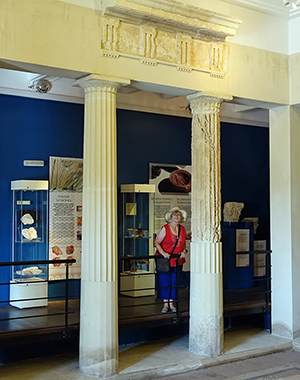
-
Residence: Valletta Harbor
Julius and his contingent of soldiers, along with their prisoners and the other passengers, winter in Malta waiting on the sea lanes to reopen to safe sailing in the early spring. The voyage is renewed on another Alexandrian grain ship, which itself had wintered on the island. Luke’s keen eye for detail finds irony in the figurehead of their new vessel set to take them to Rome. Publius and his islanders do the “right thing” in patron-client terms by providing for the needs of the departing guests. They likely sailed from the largest port on the east side of the island, Valletta, a major harbor even today.
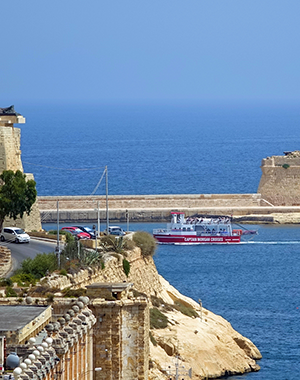
-
Residence: Sankebite Backstory
-
JR—Malta: Tourist Perspectives
-
Tourist: Parking Deck Challenge
So, the hotel Maritim Antonine in the city of Mellieha near Saint Paul's Bay answers the question, “Do you have available parking for cars?” with a yes. However, they did not volunteer the information that the deck barely can accommodate a Smart Car. If you would like a touch of claustrophobia exhilaration, click on.

-
Tourist: Festivals and Aquarium
Malta citizens apparently love festivals, since they celebrate one festival or another nearly half the weekends of any given year. We stayed in a district called Mellienha. The weekend we visited Mellienha was celebrating the “Festival of Our Lady.” The Mellienha Catholic church was decorated to look like a gingerbread house, and small bands paraded down the main street each night. Another tourist attraction that was fairly new when we visited is the Malta National Aquarium. The aquarium is beautifully done. The theme is built around the idea of going down into a shipwreck on the bottom of the sea. I wondered if any allusion were intended to the famous biblical story of the shipwreck of Paul.
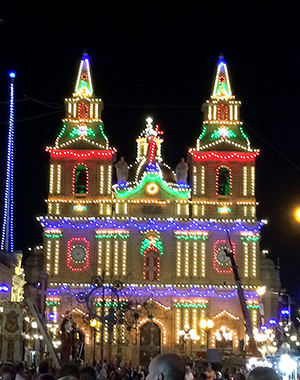
-
Tourist: Parking Deck Challenge
Videos > Videos-1MJ Videos-2MJ Videos-3MJ Videos-4JR Videos-Rev